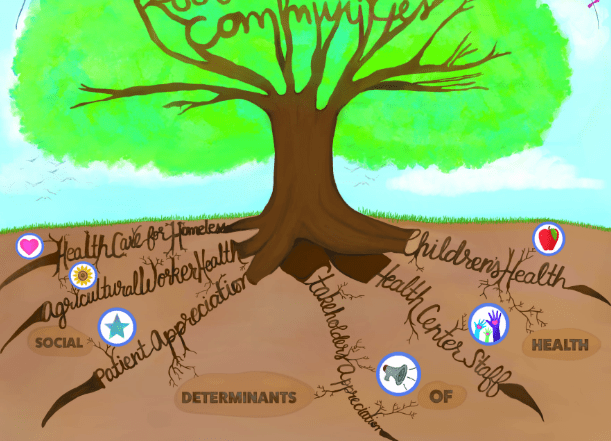How to Make Your Next Community Needs Assessment A Success
Tips, tricks, and lessons from the field so that your nonprofit gains the most insight from your next assessment
If you read my last blog post, you know what a community needs assessment is and why they can be so valuable when done well. In addition to meeting any compliance requirements (I’m looking at you, local health departments, community hospitals, and FQHCs), needs assessments can help your organization in many ways. It can enable you to:
- Design or make the case for a new program or service
- Determine or make the case for a new site
- Better align services to needs
- And better understand the community’s perspectives
How do you ensure your needs assessment process is designed for success? Here are some tips, tricks, and lessons from the field to ensure that your nonprofit gains the most insight from its assessment.
Define Your Community Clearly at the Beginning
Defining the community you’re assessing is one of the very first steps in a successful community needs assessment. There are quite a few different ways communities can be defined for assessment purposes:
- Geographically, like a specific county or set of zip codes
- Demographically, say, groups like children, immigrants, people identifying as American Indians, etc.
- By another characteristic, such as people with cancer or those experiencing homelessness
Often, the community is defined both geographically and by population, such as low-income individuals within certain defined zip codes, or all the immigrant residents of one county.
So how do you decide for your organization how to define the community you are studying? Consider reviewing these areas to guide you:
- Your mission: if your nonprofit’s purpose is serving a specific group, your assessment should reflect that population. An organization that serves individuals with disabilities would certainly want to make sure its community reflected this.
- Your service area: you may also have a defined geography that you serve, which should be the focus of your assessment. For example, if you serve a specific state, county, city, or neighborhood, that could function as your service area.
- Requirements: FQHCs, local health departments, and hospitals are often subject to requirements that dictate how to define the community, so make sure your definition complies! For example, FQHCs must define their service area as those zip codes that the top 75% of their patients come from.
- Areas of growth or expansion: If you’re planning on expanding services or sites to meet the needs of new groups, don’t forget to include them in your service area! This could include if you are moving into a new geography or if you are starting to serve a new population.
Be Careful and Comprehensive with Quantitative Data
Quantitative data is a great tool for needs assessments. It can be valuable to understanding population demographics like age, gender, race, ethnicity, income, languages spoken, or employment. It can also shed light on data related to your mission and programs, whether that be graduation rates, homelessness rates, transportation access, or health indicators. And, it can also help to understand data about existing service provision in the area, such as the number of people currently receiving a type of service.
Yet it’s incredibly important to be careful with quantitative data, to make sure you are not drawing the wrong conclusions. Here are a few tips to make your quantitative data use more thorough and careful:
- Select relevant comparisons, to help understand how other geographies or communities fare compared to the community of interest. Don’t worry if your community is “better off” than that locale – it could demonstrate that your programs have an effect.
- Look longitudinally when possible, to understand trends in population demographics, socioeconomics, service levels, and how they align with each other. Are services increasing but not as fast as the demographic that needs them?
- Be careful with phrasing so you do not imply causality if it is not there. Likewise, be careful with margins of error, denominators, rounding, and comparisons. It is easy to manipulate data only to find that what you have extrapolated no longer makes sense or is a good use of the data. Use common sense and a critical eye to make sure you are not implying something with your data that is not credible, like that a group is more than 100% of the population.
Take a Mixed Methods Approach
To really reap the most benefits from your needs assessment, consider incorporating qualitative methods too. Quantitative methods only tell part of the story; qualitative approaches can help you gain greater perspectives on the community, its needs, and gaps in services. Here are a few of my favorite methods to incorporate into needs assessments:
- Interviews are perfect for learning from subject matter experts like board members, key staff, leaders of other nonprofits, or elected officials. One-on-one interviews let you take in their perspective privately and to delve deeply.
- Focus groups are ideal for sharing thoughts among similar people. Convening 8-12 frontline staff, or a small group of patients, allows for these groups to bounce ideas off each other about what the needs are in a focused way. By keeping the groups homogenous, you help make everyone feel comfortable and stay on topic.
- Town halls or community meetings are effective at having larger (~20-80) groups weigh in on data already gathered and share their thoughts. Small breakouts or other activities can be used to draw out priorities from bigger, more diverse groups who may have varied perspectives. This is a great way to also build community across a varied and diverse group of stakeholders.
- Community surveys gather feedback from very large numbers of individuals (100+, or even 1,000+). Though the feedback does not get as deep as in the other methods, it is a great way to incorporate the widest group of people into your assessment.
What’s your organization’s approach to needs assessments? Mixed methods or quantitative only? If you need support with an upcoming needs assessment, schedule a call below or click here to learn more about the different ways we can help.





